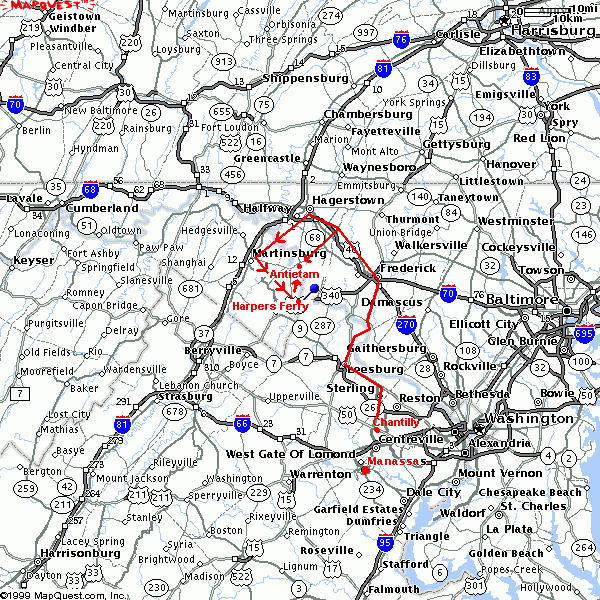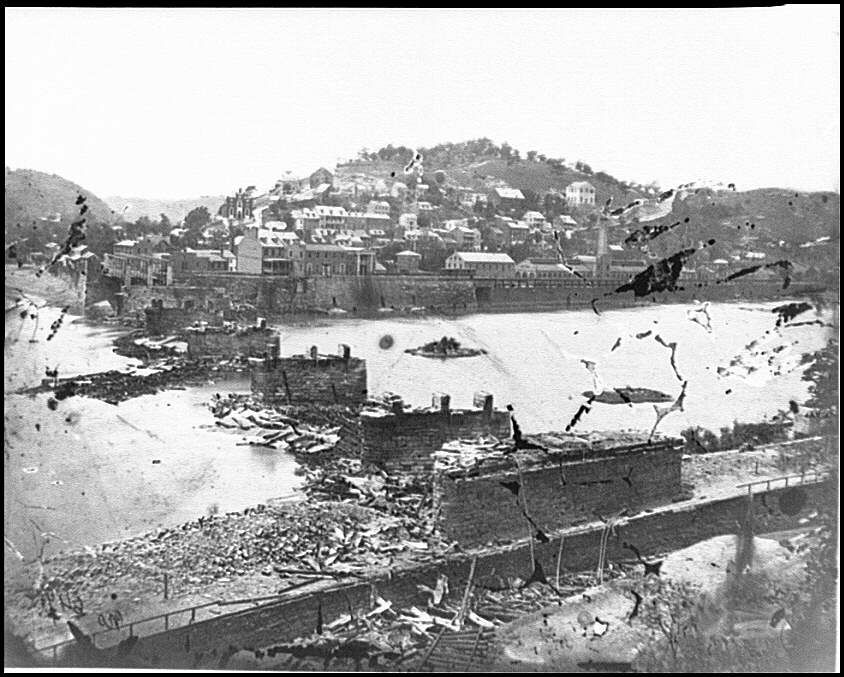| Momentum
was now with Lee. His options were to stay in Northern Virginia, and await
the next incursion by the Union Army, fall back to Richmond and surrender
the Virginia land he had fought so hard to possess, or to take the war north
into Union held territory. This latter option offered many benefits. War
torn northern Virginia had few resources left to feed his Army, while the
rich farmlands of Maryland could. Politically, there was the chance of offering
Maryland the opportunity to join the Confederacy, thereby trapping Washington
DC. Britain and France were still considering backing the Confederacy and
a presence in northern territory could prove the legitimacy of the Southern
cause. And lastly, and most importantly, taking the war to the North could
cause the general population to reconsider the war effort entirely and sue
for peace. The plan would be to draw the Union Army out of Washington DC,
and meet it on Lee's terms. Battle orders were issued, and the Confederate
Army was once again on the march. Unknown to Lee, one of
these battle
orders would mistakenly fall into the hands of General McClellan. McClellan,
whom Lincoln had turned to after Pope's failure, was now back in command
of the Union forces. Within two days of the Ox Hill fight, the 35th and the rest of the Thomas' brigade was leading Lee's Army north. Two days later, the Army of Northern Virginia crossed the Potomac and became for the first time, the invading Army. The advance north was made at Jackson's normal quick pace. Fifty minutes of marching followed by ten minutes of rest. During the march, Hill and Jackson got into an argument, and for much of the march, Hill, now under arrest, marched at the rear of his division. The bitterness over this incident would bring to head a long standing mistrust Hill held for Jackson, and would not end until Jackson's death months later. Upon arriving at Frederick, the division rested for five days. During this period Lee planned his next move. He was aware that McClellan was slowly moving his Army out of Washington DC and heading his way. But the Union garrison to his rear had not retreated as expected, and was known blocking his line of retreat back to Virginia. Jackson was ordered to take his troops and capture the town. Marching north, and departing on September 10th, Hills' Division would cover a 50 mile circular route, seize the commissary at Martinsburg and arrive near Harper's Ferry on the morning of the 13th. Hill put his men into formation on School House Ridge, just west of the main Federal line on Bolivar Heights. There they waited, periodically exchanging skirmish fire with the Union troops.
|


